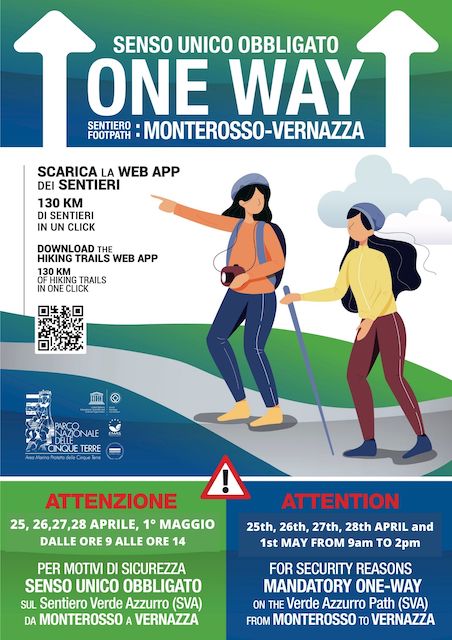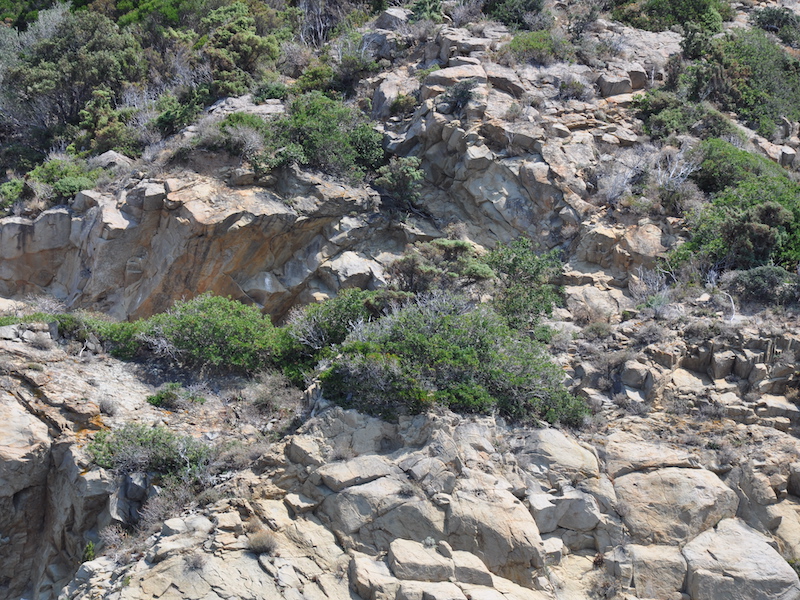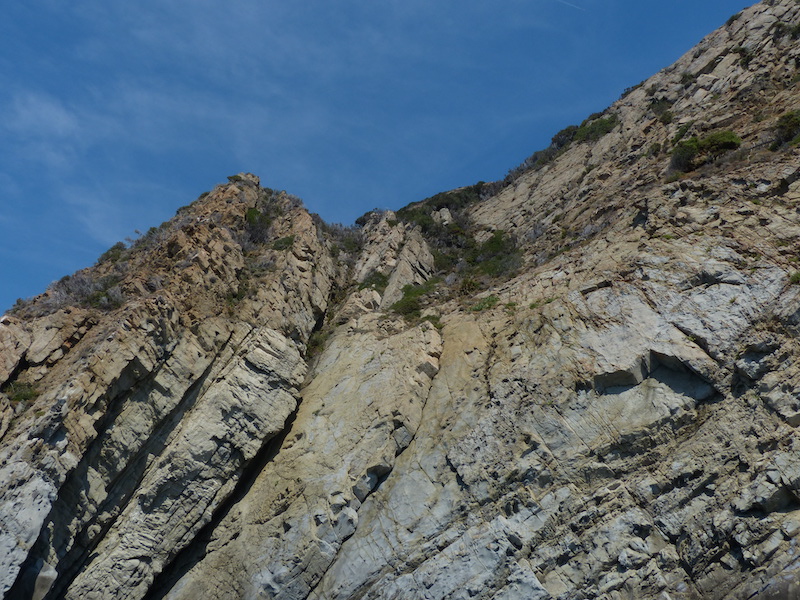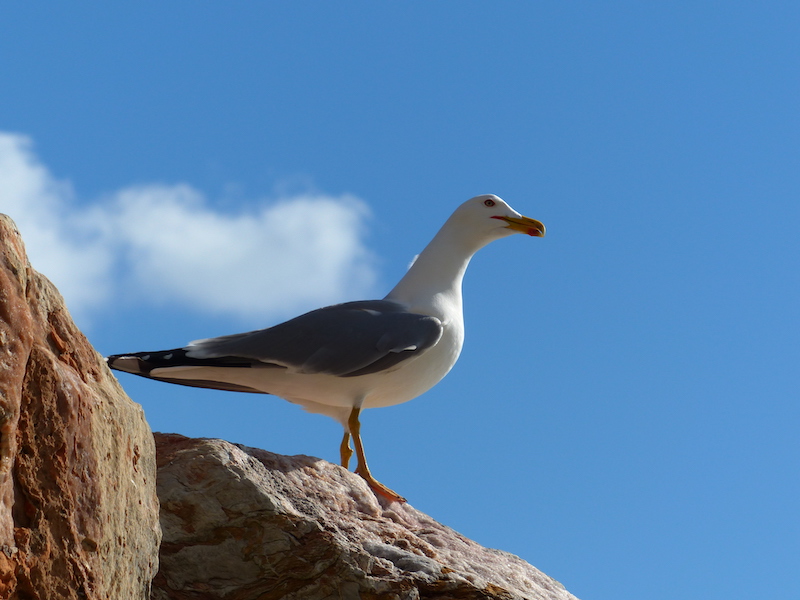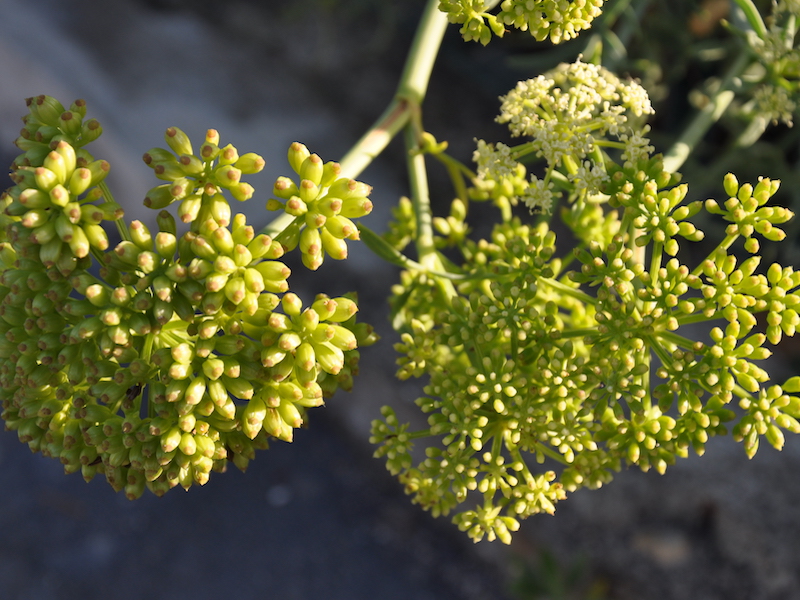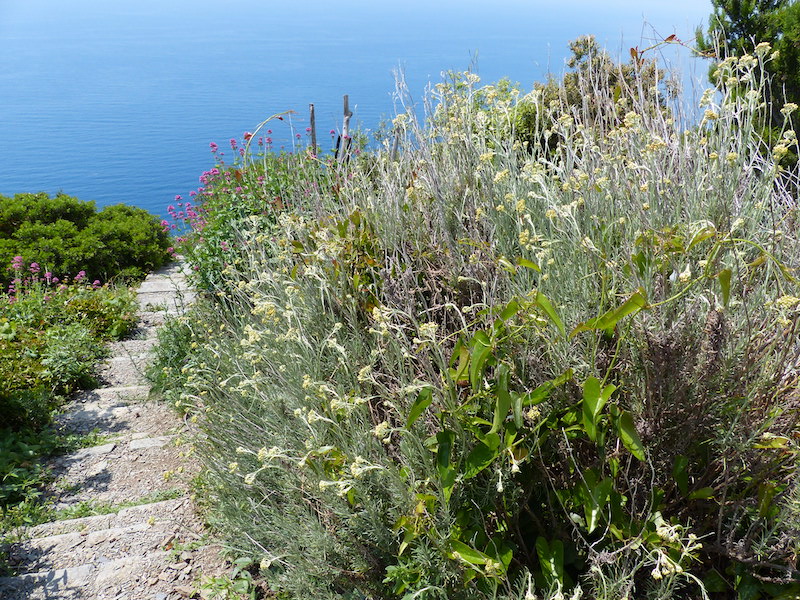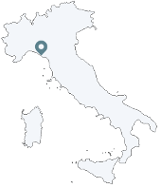On the rocky coast, directly facing the sea, plant species live that can stand the sea spray and aridity, that are able to cling to rock crevices and survive the scarcity of soil; animals dwelling here are those typical of open and rocky coastal environments, such as the yellow-legged gull, the raven, geckos and lizards.
High salinity, wide temperature range, scarcity of soil, frequent and strong winds make this a very challenging environment: therefore vegetation grows low, sparse and irregular, and consists of highly specialised plants. Birds - both nesting and wintering - are prominent in the coastal fauna, as they make the most of the rocks' heat and inaccessibility to keep their eggs warm and avoid most predators, or to spend the winter months in a milder climate than the cold mountain one where they breed. The flora consists of species with fleshy and water-rich leaves like the sea fennel (Crithmum maritimum L.), thorny ones like Euphorbia spinosa, or tomentose plants, scented with essential oils like the Italian strawflower (Helichrysum italicum L.) and the silver ragwort (Senecio cineraria L.).
This area is hardly or not at all accessible, prone to collapses and landslides, and can often be seen only from the sea or by looking down from the coastal paths.
Sandstone
Sandstone is a clastic sedimentary rock, which originates under the sea and emerges in most of the National Park, characterising its coastal morphology. It is formed by mostly sandy sediments called turbidites, which density flows carried from the continental margin and deposited into the deep ocean. Then they re-emerged as part of the complex tectonic history of the Northern Apennine. Sandstone comes in layers of varying thickness, and its colour is tan after long exposure, or grey-blue when recently emerged. Its acidity, due to the high percentage of quartz in its composition, influences the soil and flora above. Sandstones at Cinque Terre can be distinguished by age and basin of origin: to the east, around La Spezia and Riomaggiore, the coastal boulder ("Macigno Costiero") emerges, which originated in Tuscany during the Oligocene (35 to 26 million years ago); to the west, on the Mesco promontory, there are the sandstones of Monte Gottero, which originated in Liguria during the Late Cretaceous-Paleocene (88 to 60 million years ago). These sandstones come in rather homogeneous, hard and compact layers, easy to square off, which simplified extraction, and were therefore largely used in building and for dry stone walls.
(See gallery)
Sea fennel (Crithmum maritimum L.)
This is a perennial grass in the family Apiaceae, easily found along the coast. Adapted to the saline environment, it plunges its roots in rock or wall crevices. It has fleshy, divided, glaucous and aromatic leaves, and blooms from July to September. The flowers are light-coloured and grouped in small umbels. The plant is edible and locally used to accompany fish dishes.
(See gallery)
Italian strawflower (Helichrysum italicum L.)
The Italian strawflower or immortelle is a shrub-like perennial in the family Asteraceae. Its scientific name comes from the golden yellow colour of the flower heads, while some of the common names refer to its longevity. It has linear, alternate, soft leaves, covered in thick white down, and the margins are deflected toward the inside. The inflorescences, made of several cone-shaped flower heads, are grouped in corymbs at the top of the stem and emanate a powerful scent.
(See gallery)
Yellow-legged gull (Larus michahellis)
The Yellow-legged gull is a seabird in the family Laridae. It is 55 cm long with a 150 cm wingspan. Adults are white, with grey back and upper wing and black wing tip, and a red spot by the tip of their rather large bill. The webbed feet are yellow. This is the most common of all Mediterranean coastal gulls, and it nests in the spring, in colonies on the rocky coasts or even on house roofs. It feeds on both marine and land invertebrates and vertebrates, vegetables and remains of dead animals.
Silvia Olivari

